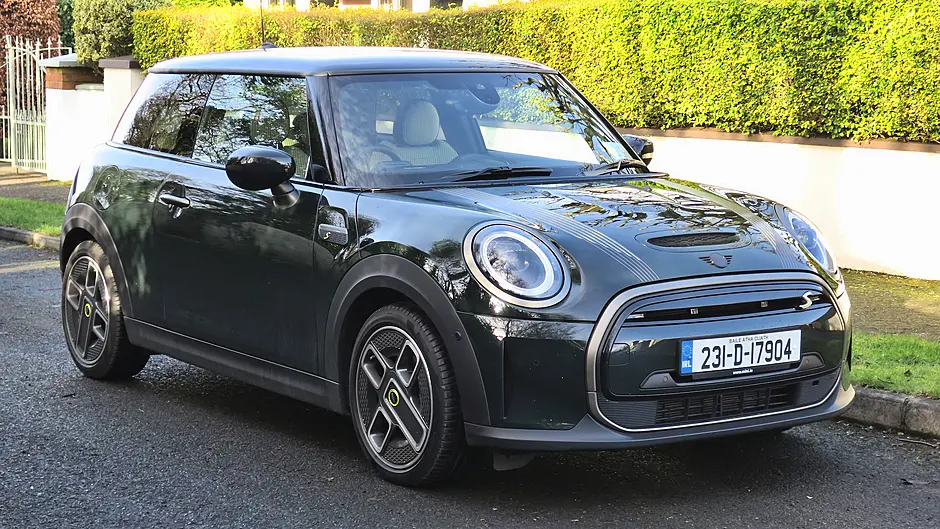BY BRIAN BYRNE
THERE are still many of us who remember the original Alec Issigonis-designed Mini-Minor launched in 1959, described 40 years later as ‘the second most influential’ car of the 20th century, beaten only by the Ford Model T. Issigonis himself died a decade earlier than that, aged 81, never seeing that accolade.
My mother had a couple of them sequentially, and before I had my own cars I’d sometimes borrow what was a tiny, draughty, noisy, but ultimately awfully fun car to drive.
Even though the current Mini, produced by BMW for nearly a quarter of a century, bears only a style-cues relationship to that car, recent experience with the electric version of the Cooper S certainly brought back memories.
This review is of the third generation BMW mini, with an electric powertrain. An electric-only fourth generation is due to arrive later this year, crucially with larger batteries than this one. And electric is important to Mini: four in 10 of the model sold here last year were EVs.

When you’re dealing with a shape that is so dependent on its iconicity, you don’t muck with it. So the overall design of this car is little different than the one BMW brought to market in 2001, apart from some size changes.
The most common epithet from people who look at it is ‘cute’. At the risk of getting caught in a gender quagmire, I’d guess that most of those who do comment thus are women. But in fact, there’s nothing particularly girly about what has always been a practical and efficient shape. Maybe it’s the happy headlights that bring on the description.
Even though the Mini is a small car, smaller and significantly lower than Toyota’s Yaris, for instance, that same shape makes it easy for even a tall man like me to get into. Once inside, it’s so much more a premium ambience than my mother’s original with its manual horizontally sliding windows and a dangling cord in the door to open it.
The materials and design details are at the very top end of quality and fit, and with quite distinctive, even jazzy treatment on parts of the dash. The large round centre screen no longer carries the original’s speedometer but does everything else that we now expect in infotainment. The welcome manual switches and knobs for climate and some other functions tilt at the classic and in very high quality. Once in, I was seriously impressed with the driving position.

It’s a three-door, so the rear seats are that little bit harder to access. But for two people who aren’t very big, there’s reasonable comfort at least on short journeys. Typically, though, the Mini is not bought for a busy family’s use, so it probably doesn’t become an issue.
The seats material in my review car was a cheerfully bright houndstooth-style check, which along with the glass roof helped keep everything bright. The 211-litre capacity of the boot space behind is a bit down on immediate competitors.
This generation of the Mini has been available with petrol and diesel engines and in standard and Cooper performance rigging. My electric version reflected the EV acceleration performance by being called a Cooper S.
Despite the extra 525kg weight of the powertrain, it is capable of sprinting to 100km/h in 7.3s, not a lot shorter than the 6.8s of the current petrol Cooper S. For comparison, the original 1960s car’s rally-winning performance was helped by its 11-second accelerative ability (the base car then did the ‘sprint’ in north of 27 seconds).

My time with this 184hp car did allow a couple of fun tests of its capability, and the handling suggested the fast and accurate chassis experience no way diminished.
The downside of using the car outside the city was the battery range, a function of its small size at 32.6 kWh. I got a real range of 170km, it could be significantly longer in purely urban usage. One upside of that small size is a quick recharge ability. The new generation version will have 54.2kWh battery option.









